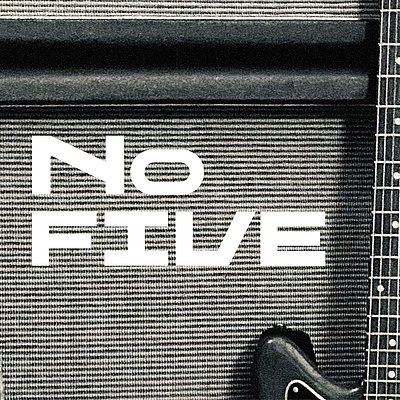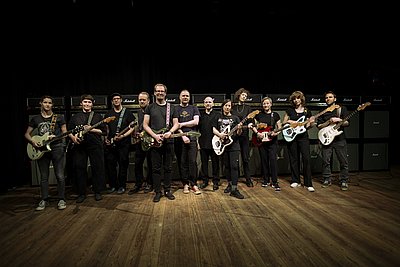Welcome at the Interface Culture program website.
Acting as creative artists and researchers, students learn how to advance the state of the art of current interface technologies and applications. Through interdisciplinary research and team work, they also develop new aspects of interface design including its cultural and social applications. The themes elaborated under the Master's programme in relation to interactive technologies include Interactive Environments, Interactive Art, Ubiquitous Computing, game design, VR and MR environments, Sound Art, Media Art, Web-Art, Software Art, HCI research and interaction design.

The Interface Culture program at the Linz University of Arts Department of Media was founded in 2004 by Christa Sommerer and Laurent Mignonneau. The program teaches students of human-machine interaction to develop innovative interfaces that harness new interface technologies at the confluence of art, research, application and design, and to investigate the cultural and social possibilities of implementing them.
The term "interface" is omnipresent nowadays. Basically, it describes an intersection or linkage between different computer systems that makes use of hardware components and software programs to enable the exchange and transmission of digital information via communications protocols.
However, an interface also describes the hook-up between human and machine, whereby the human qua user undertakes interaction as a means of operating and influencing the software and hardware components of a digital system. An interface thus enables human beings to communicate with digital technologies as well as to generate, receive and exchange data. Examples of interfaces in very widespread use are the mouse-keyboard interface and graphical user interfaces (i.e. desktop metaphors). In recent years, though, we have witnessed rapid developments in the direction of more intuitive and more seamless interface designs; the fields of research that have emerged include ubiquitous computing, intelligent environments, tangible user interfaces, auditory interfaces, VR-based and MR-based interaction, multi-modal interaction (camera-based interaction, voice-driven interaction, gesture-based interaction), robotic interfaces, natural interfaces and artistic and metaphoric interfaces.
Artists in the field of interactive art have been conducting research on human-machine interaction for a number of years now. By means of artistic, intuitive, conceptual, social and critical forms of interaction design, they have shown how digital processes can become essential elements of the artistic process.
Ars Electronica and in particular the Prix Ars Electronica's Interactive Art category launched in 1991 has had a powerful impact on this dialog and played an active role in promoting ongoing development in this field of research.
The Interface Cultures program is based upon this know-how. It is an artistic-scientific course of study to give budding media artists and media theoreticians solid training in creative and innovative interface design. Artistic design in these areas includes interactive art, netart, software art, robotic art, soundart, noiseart, games & storytelling and mobile art, as well as new hybrid fields like genetic art, bioart, spaceart and nanoart.
It is precisely this combination of technical know-how, interdisciplinary research and a creative artistic-scientific approach to a task that makes it possible to develop new, creative interfaces that engender progressive and innovative artistic-creative applications for media art, media design, media research and communication.
NoFive. Bruckner x Pop x No Wave
14. Juni, 12. bis 13. Juli, 4. Sept. und 6. Dez. 2024 Ansfelden - Ottensheim - Linz - Wels
Formation mit Beteiligung der Kunstuni Linz inszeniert Anton Bruckner fürs Stadion
Den wohl wildesten Beitrag zum Brucknerjahr liefert eine 12-köpfige Band, die unter anderem mit dem ikonischen „Seven Nation Army“-Riff das Blau-Weiß Stadion füllen will.
Mit zehn Laufmetern Vollröhren-Verstärkern könnte es das wildeste Projekt im Rahmen des Brucknerjahres werden: NoFive. Bruckner x Pop x No Wave. Nichts weniger nimmt sich NoFive vor. Eine Fusion aus Bruckners fünfter Symphonie und dem ikonischen „Seven Nation Army“-Riff der White Stripes, durchgeschüttelt und verrührt im Glenn Branca Style. Eine mächtige Wand aus Gitarren-Amps verstärkt das Ensemble aus neun E-Gitarrist*innen, einem Bassisten, einem Drummer und einem Dirigenten und lässt Bruckners Fünfte als avantgardistische Soundscape zwischen Hoch- und Popkultur oszillieren und vibrieren.
Über das Brucknerjahr verteilt tritt NoFive als Projekt im Rahmen von Oberösterreichs KulturEXPO an fünf so unterschiedlichen Orten auf wie dem Mariendom und dem Blau-Weiß Stadion, dem Ottensheim Open Air und dem Pfarrhof in Ansfelden sowie dem alten Schl8hof in Wels.
Dazu Projektleiter Andre Zogholy von der Kunstuniversität Linz: „Mit den Konzerten wollen wir Erlebnisse in verschiedenen kulturellen Kontexten schaffen und mit unseren musikalisch-radikalen Ansätzen weit über den Kreis der klassischen Klassik-Fans hinaus für Bruckner begeistern.“
An den Gitarren: Dominique Berger, Johanna Forster, Wolfgang Fuchs, Lina Gärtner, Florian Graf, Kristina Hofer, Gabriele Kepplinger, Leona Sperrer, Andre Zogholy und Samy Zogholy
Drums: Christoph Fizl Hehn
Dirigat: Marc Reibel
Auftrittstermine
Pfarrhof in Ansfelden: 14. Juni 2024
Ottensheim Open Air: 12. bis 13. Juli 2024
Mariendom: 4. September 2024 im Rahmen der Ars Electronica
Alter Schl8hof in Wels: 6. Dezember 2024
Blau-Weiß Stadion: Auftrittstermin, sobald der Spielplan steht

